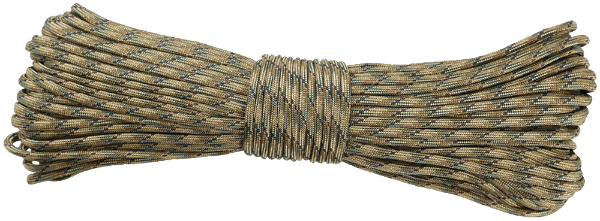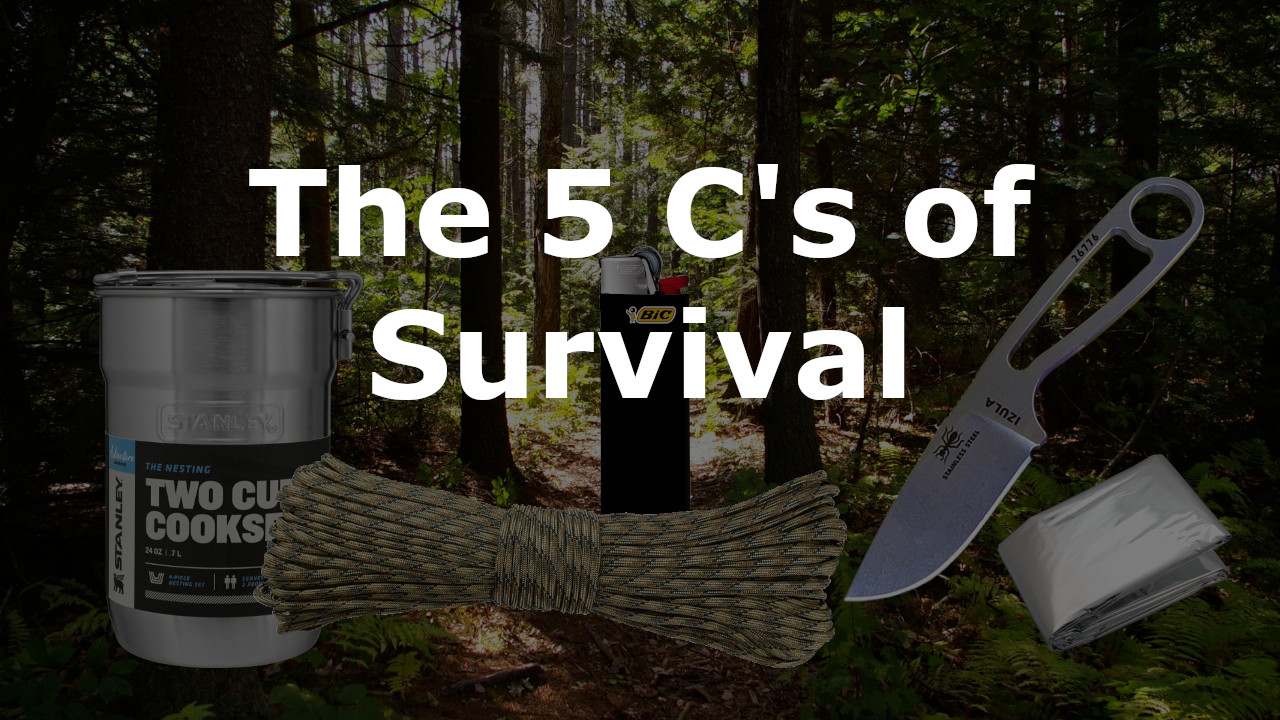“The 5 C’s of Survival” is an old concept popularized by author Dave Canterbury in his books such as Bushcraft 101: A Field Guide to the Art of Wilderness Survival. If you are interested in bushcraft and wilderness survival, Dave’s books are a valuable resource.
One of the interesting things about the 5 C’s of Survival is that they can apply to everything from a comprehensive 72-hour kit all the way down to your personal EDC. While they are geared a bit more toward wilderness survival than urban survival, they can apply to both, depending on how you adapt them.
The 5 C’s of Survival are Cutting, Combustion, Cordage, Cover, and a Container.
In this article, we’ll look at all five categories in detail and discuss some good options as well as how they might prove useful in a survival situation.
Cutting
Cutting most commonly refers to knives, although it includes hatchets, axes, saws, and other cutting implements as well. It is this author’s opinion that everyone should carry a knife at all times (or at least have one within arm’s reach), but depending on the size of the survival kit you’re building, a folding saw or pocket chainsaw may come in handy too.
The ability to cut things can be crucial to survival. From wood processing to food prep to shelter building, a good knife can quite literally be the difference between life and death in a survival situation.
As far as the best knife (or knives) for survival… Well, that’s a topic for another article. Suffice it to say that there are many, many good choices. Personally, I really like the Esee Izula or Esee Xancudo.
Combustion
Combustion refers to fire, or more specifically, the ability to create fire where none exists. Fire can keep you warm, be a source of light, and help signal for rescue. Fire allows you to boil water, cook food, and dry wet clothes. It can even assist in shelter building.
While a knife is often regarded as the primary survival tool, fire is equally valuable. The simplest way to create fire is with… wait for it… a lighter. Yes, it’s not the most exciting or traditional option, but the simple Bic lighter is inexpensive, easy to carry, and very reliable. Make a habit of keeping one in your pocket. You never know when it might come in handy.
Still, as the old saying goes, “Two is one, one is none.” You should always have at least two methods of creating fire on you. In addition to a lighter, a ferro rod and striker makes an excellent backup method for creating fire. Even more versatile is a one-handed option such as the Spark-Lite Fire Starter because you never know when you might be down a hand due to injury.

Waterproof matches are another classic option, though their disposable nature makes them a less desirable recommendation overall.
I also recommend carrying a bit of easy-to-light tinder with you. While tinder can usually be improvised in nature, having it ready to go can save a lot of time and energy that may be better reserved for other tasks.
Cordage
Cordage includes anything from rope to thread, which can be used to bind or lash things together. Even dental floss can serve as improvised cordage. Some people also classify snare wire as cordage.
For general purposes, 550 paracord (the kind with seven internal strands) makes a good choice for preparedness and survival. It’s strong enough for shelter building, yet the individual internal strands can be used for fishing, snares, and even sewing.

You can also buy dedicated survival paracord with specialty internal strands for fishing and fire starting.
Bonus Tip: carrying a large needle or two (such as a sail needle) can greatly expand the potential uses of your cordage.
Cover
Cover can be anything that protects you from the elements, from your clothing or a jacket to a blanket, tarp, tent, sleeping bag, bivy, poncho, and a host of other materials and products. Staying dry and warm (or cool in hot weather) can be an important component of survival.
While carrying a tent or a tarp isn’t really realistic for EDC or even a casual day hike, an emergency blanket can fit in a pocket and an emergency bivy can fit in a light hiking pack.
If you’re forced to spend an unexpected night outdoors, products that provide cover can prove far more valuable than you might imagine.
Container
The humble container is one of the more overlooked survival items. It’s not as sexy as a knife or as flashy as a firestarter, but a container for boiling water and cooking food can be quite difficult to improvise under less-than-ideal circumstances.
The ideal container is at least 16 ounces, metal, single-walled, and has a wide mouth. Bonus points if your container has a sturdy lid as it makes transporting food or water much easier.
A wide-mouth steel water bottle such as those sold by Klean Kanteen can be very useful as a survival aid while also serving as a daily beverage container. The Stanley Adventure Camp Cook Set is another popular and inexpensive container option.

In a pinch, you could even make do with an empty can such as the kind used for canned food. The coating used on the inside of some cans can pose a potential issue, however, when using a can for cooking food or boiling water.
Conclusion
While the 5 C’s of Survival may omit popular “survival kit” staples such as a button compass, pealess whistle, plastic signal mirror, and tiny fish hooks (not that there’s anything wrong with carrying those too), they do cover the basics of enduring an unexpected night or two in the wilderness.
If you want to add a bonus item to your 5 C’s, a flashlight is a great EDC item that can do double duty as a survival tool.
The Streamlight MacroStream USB will provide up to 8 hours of illumination on its low, 50-lumen setting.

It is impossible to know what survival needs you may encounter over the course of your life, but making a habit of carrying the necessary items to address the 5 C’s of Survival will go a long way toward making sure you do in fact survive no matter what obstacles you face.







